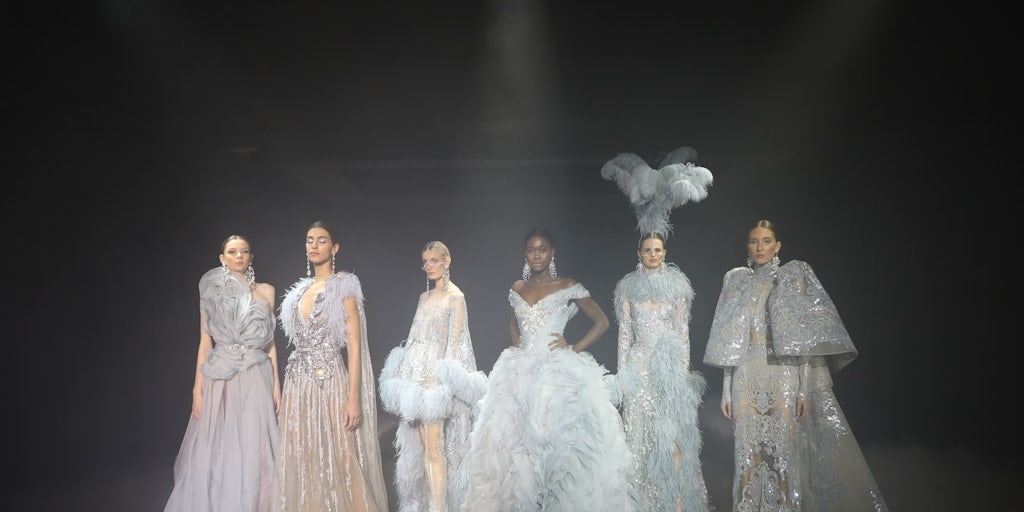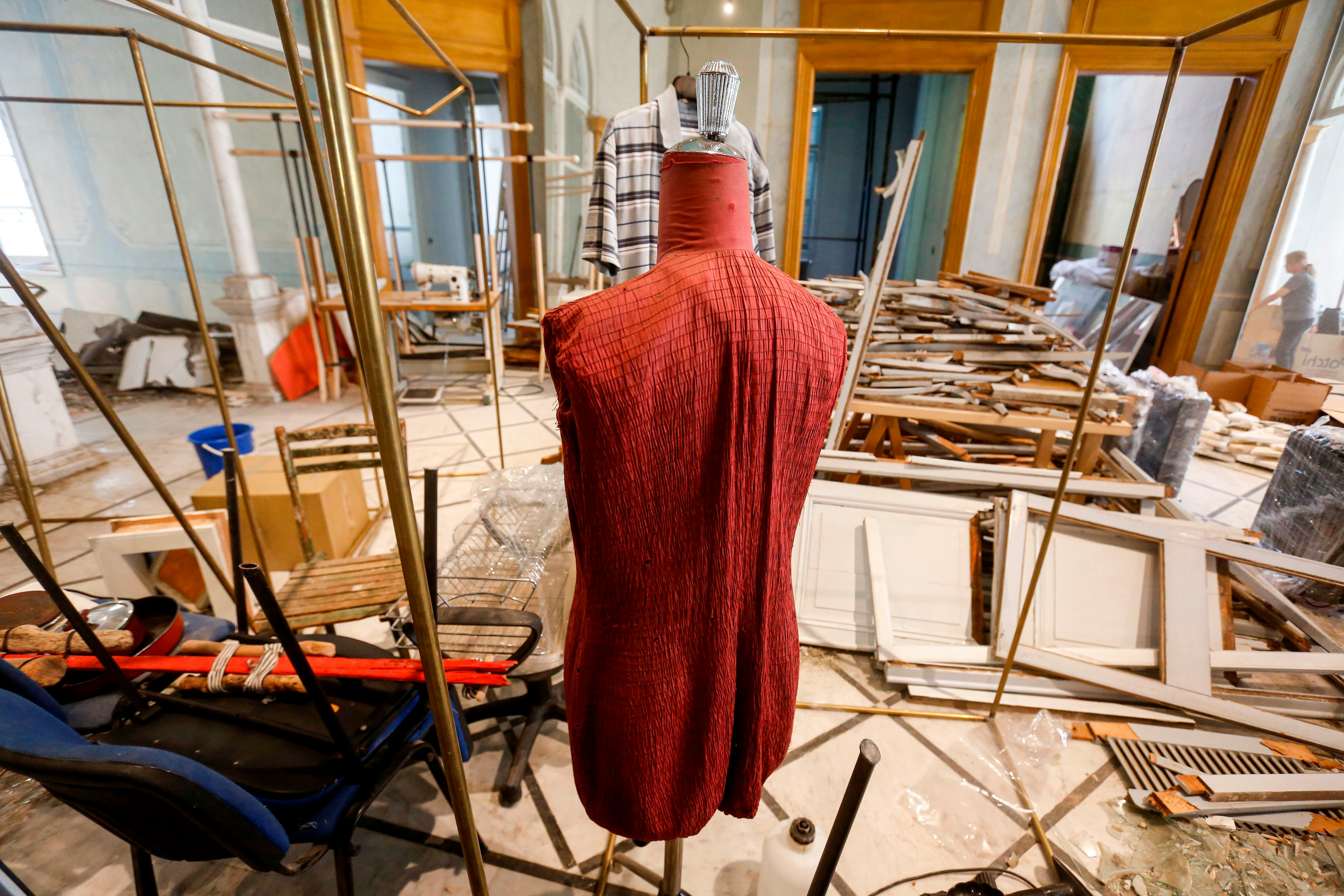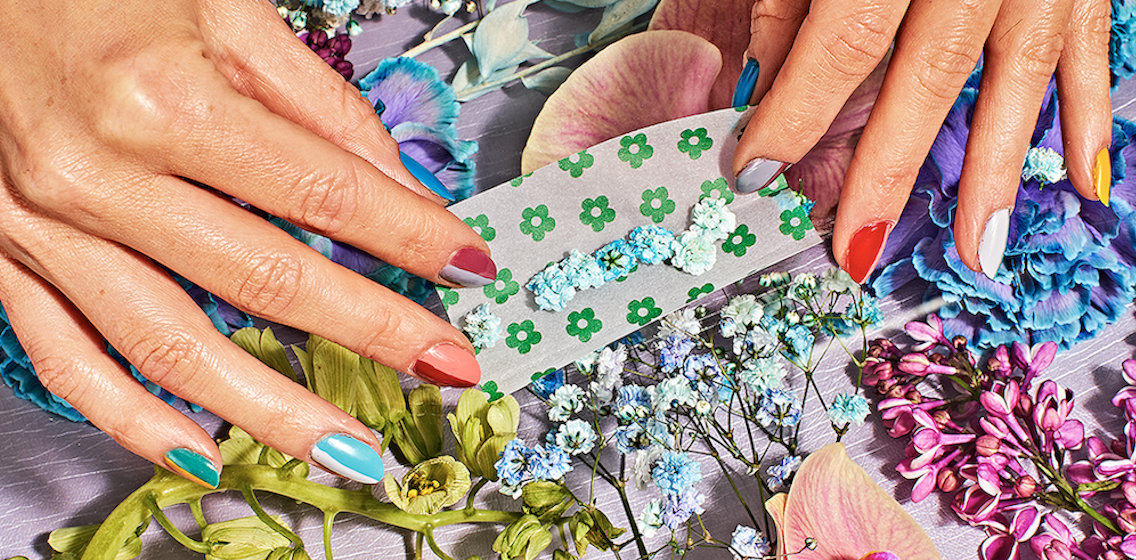Lebanese Designers Still Suffering From ‘Triple Crisis’ | BoF Professional, News & Analysis
When Elie Saab presents his Autumn/Winter 2021-22 collection tomorrow (March 6), don’t expect loungewear to make an appearance on the runway. “We should have launched that pre-pandemic; then the client might have wanted an Elie Saab tracksuit,” quips Elie Saab Junior, the 30-year-old son of the founder of the luxury label that bears their name, speaking by phone from the firm’s headquarters in Beirut.
Instead, the Lebanese brand will be primed for post-pandemic parties and focus on the aesthetic for which it is beloved: “a grand look, a spectacular kind of feel,” says Saab Junior, who in 2019 was promoted from global brand director to chief executive of the group.
Saab and his countrymen are deserving of a festive reprieve and probably in need of a diversion more than most. Last year, Lebanon endured a triple whammy of the pandemic, hyperinflation of 84.9 percent and last August’s Beirut explosions that decimated the country’s already faltering economy.
Six months on from the explosions that killed over 200 people and levelled the historic buildings of Gemmayzeh and Mar Mikhael which housed much of Lebanon’s fashion community, the cause of the tragedy is still under investigation. The country is being ruled by a caretaker government following the resignation of the officials widely held to be responsible for the disaster.
A fashion dummy stands amidst destruction at the Maison Rabih Kayrouz, flagship atelier of designer Rabih Kayrouz, housed in the 19th-century Dagher Palace in Beirut’s trendy Gemmayzeh district. Getty Images.
Clearly, the parties and weddings demanding Elie Saab’s signature glamour are still on pause in the couturier’s home market of Lebanon, which has been in full lockdown since January 7 in a bid to stem Covid-19, and similar celebrations have been suspended or scaled back in the nearby Gulf countries that generate huge business for the type of lavish eveningwear for which Elie Saab is famous.
However, Saab Junior is convinced that the label’s celebration-starved clients hunger for the dramatic dresses and exquisite embroidery for which the house has been known since its inception in 1982, rather than the monotone sweatsuits that have become the unofficial wardrobe of the pandemic.
“The customer will want to go to the core of each brand. They will not want to experiment a lot,” he predicts of the time when the pandemic is brought under control. Saab Junior is already seeing green shoots of recovery in more affluent hubs across the Middle East and North Africa (MENA) region.
Sheltered from the storm by Gulf clients
“Our points of sale in Doha [Qatar] and Dubai [United Arab Emirates] have performed quite well during this pandemic. A lot of luxury clients might have some savings linked to the lockdown and not having gone on five family trips last year, to be spent on luxury,” he explains. “We had some good Saudi [Arabia] traffic. We got a big share of new clients in Dubai in December and January.”
With a secondary headquarters in Switzerland and regional offices in Paris, New York and London, Elie Saab — which employs 600 people, 400 of whom are based in Lebanon — is one of the few Lebanese luxury businesses insulated from the crisis back home. And the company’s Beirut head office, which was damaged in the blasts, was fully restored within 10 days, while neighbouring designers, reliant on landlords to make repairs, are still without premises to work from after lockdown halted NGO-funded repair works.
Making up fewer than 2 percent of its sales, Elie Saab’s domestic business is relatively insignificant to its balance sheet. “We are not reliant on Lebanon to maintain our development plans and growth,” says Saab Junior, noting that the brand has launched both homewares and luxury watches since the outbreak of the pandemic, which helped offset a 30 percent decline in global sales during 2020 as a result of the pandemic.
Our points of sale in Doha and Dubai have performed quite well during this pandemic.
Besides, “Lebanon has always been a risk and as a brand and an organisation we mitigated this risk way before the [recent deterioration], or the devaluation of the Lebanese lira or the explosions.”
Since 2019 the business has been focused on streamlining its retail footprint. “The pandemic accelerated our restructuring plan,” he says, “Elie Saab does not need two-to-three stores in a city. Today it’s not the time to think about the top line, it’s the time to think about organisation.”
For businesses that do rely on Lebanon to generate sales, however, the picture is vastly different. With the collapse of the Lebanese pound (also known as the Lebanese lira), inflation has soared further. In December 2020, the price of clothing and footwear in Lebanon increased by almost 560 percent on the year before, according to the government’s Central Administration of Statistics, while the cost of food rose by over 400 percent.
Lowering prices for local clients
For Paris-based Lebanese designer Rabih Kayrouz, who is using his slot on the Paris Fashion Week calendar to hold re-see appointments for his Autumn/Winter Maison Rabih Kayrouz collection following a digital release, the situation in Lebanon, where the house employs 10 people, has prompted the creation of a made-in-Lebanon capsule exclusively for sale in the country, “where the price can become ‘more Lebanese’,” he explains.
Whatever happens, I am not leaving Beirut.
With overall sales in Lebanon representing almost 25 percent of the house’s turnover, Kayrouz has had to adapt to an economic crisis that has made it too expensive to sell the main collection in the country where he founded the label 22 years ago. “Maison Rabih Kayrouz has very beautiful followers in Lebanon. Whatever happens, I am not leaving Beirut,” he maintains. It’s not only for the local market that Kayrouz is recalibrating his business model.
For his 35 global wholesale accounts Kayrouz has decided to produce just two ready-to-wear collections per year, down from the previous four, and is reducing prices by 20-30 percent, after renegotiating with suppliers and focusing on a narrower range of fabrics, while maintaining quality.
“I want to concentrate on one wardrobe based on iconic pieces to keep it modern and timeless,” he says, adding that the eventual goal is to reach a point where his collections do not go on sale. “I want to get to a place where I am respecting my client by giving her the right price all the time.”
Before the pandemic, Lebanese designers came to almost dominate Paris couture week. A couple of years ago, the schedule was packed with everyone from Zuhair Murad and Tony Ward to Georges Hobeika and Rabih Kayrouz. But this January, most names were absent, bar Elie Saab who released his Spring/Summer haute couture collection two weeks after the official calendar “to ensure safe shooting conditions,” according to Saab Junior.
He remains sceptical that a physical show will take place in July, saying, “The vaccination rate in France is not so exponential as to make a difference. We need to balance the risk of showing versus the reward of showing. [Shows] will return but maybe not this year. People will ease into it. This year is almost finished.” In the interim, the house will continue to show its collections digitally.
While the likes of Kayrouz and Saab have built a global customer base over decades, Beirut’s nascent designer community of young creatives are far more vulnerable to the country’s troubles.
Domestic market ‘paralysed’
Amine Jreissati, founder of ‘gender invisible’ label Boyfriend The Brand, had his showroom, workplace and home destroyed by the explosions that ripped through Beirut’s port area on August 4 last year. He had hoped to show at Tranoi this season but now says that feels like a distant ambition. “Paris is now very far in my dreams and my plans,” he says by phone from Beirut.
You have no idea how difficult it is to survive 24 hours in this country.
In the wake of the explosions, Jreissati was one of a creative collective to receive international donations and deployed the funding to build an e-commerce site and create a capsule collection reflecting his response to the crisis engulfing his country, which he launched in December. Of the 420 pieces he produced, Jreissati estimates that fewer than half have been sold, stymied by the lockdown measures imposed in January. “No one is in the mood to buy [here] and I wouldn’t push people to buy because I know how difficult money is now,” he says.
When he produced the collection in the last quarter of 2020, the dollar was 4,000 Lebanese pounds. Today, it fetches 9,500 on the black market, which makes financing future collections near impossible. “Lebanon is paralysed. You are so limited that you feel handcuffed,” he says, explaining that in pharmacies Panadol is sold by the pill rather than by the box due to the spiralling economic crisis that is also crippling the creative energy of the fashion community.

Approximately 200 people work at the Beirut headquarters of Zuhair Murad but employees left 10 minutes before the explosions. Zuhair Murad.
“You have no idea how difficult it is to survive 24 hours in this country. You cannot expect designers to have energy or creativity while the country is drowning in problems,” he says.
Footwear designer Andrea Wazen, whose Beirut store was destroyed by the explosions, is also frustrated by the dollar crisis. “It’s insane; we used to rely on local sales [to generate cash flow],” she says. “It’s like you’re in a boxing match. You just have to keep fighting.”
Wazen, who produces her footwear line in Beirut, says that her 10 international wholesale accounts have been understanding of delays to delivery times and adds, “As a Lebanese community of designers we have strong adaptation skills. We have learnt to be resistant to issues, to be positive and keep going. Having the support of the international community has been a very big help.”
Leaving Lebanon to set up business elsewhere
For some young creatives, such as womenswear designer Roni Helou, it is time to look for opportunities outside of Lebanon. “We’re seeing a lot of people leaving the country and I am one of them,” he says. This week Helou, whose client base is dominated by Qataris, Saudis and Kuwaitis, is relocating his family and part of his five-member team to Doha in Qatar, where he aims to run his brand from for at least the next two years.
The resilience shown by Gulf markets has also proved a lifeline to Azzi & Osta, the couture, bridal and ready-to-wear house founded in 2010 by George Azzi and Assaad Osta, which has 40 employees in Beirut. Despite the destruction of their new atelier last August, in which 10 members of staff were injured, the duo has continued to service couture clients and their 20 global ready-to-wear stockists.
It saddens us more than you can imagine that the Lebanese designers won’t be as active on the international showing calendars.
“Many clients appreciated couture more after the outbreak of the pandemic,” says Azzi. “Weddings cannot be as big, so they had more budget to spend on their dream dress. Even though dresses are not as big or as dramatic as they used to be in the Gulf, they are still meticulously embroidered with lots of craftsmanship.” Citing Kuwait and Qatar as the biggest markets for their signature blend of volume, colour and drama, Azzi believes that the return of the dramatic dress is on the horizon, saying, “They love to live and to celebrate.”
On the international stage, however, it is only Elie Saab who will be flying the flag for Lebanese glamour on the catwalk in Paris this season. “It saddens us more than you can imagine that the Lebanese designers won’t be as active on the international showing calendars. [My father] Elie Saab worked his whole life to pave the way for young designers in Lebanon to be able to follow in his footsteps and expand globally. Every time we saw [their] success it was like our success,” said Saab Junior.
Kayrouz believes that the only way Lebanon’s industry will regain economic security is to reinvigorate the once-thriving manufacturing sector that was lost in the 1990s. “This way we can create employment for lots of people, not only small ateliers,” he says. “Manufacturing will save the country, it will save our community.”
Related Articles:
Lebanon’s Fashion Industry Hit by Triple Crisis
Can Beirut Steal Some of Dubai’s Thunder?
In Beirut, Sarah’s Bag Balances Style and Social Good






